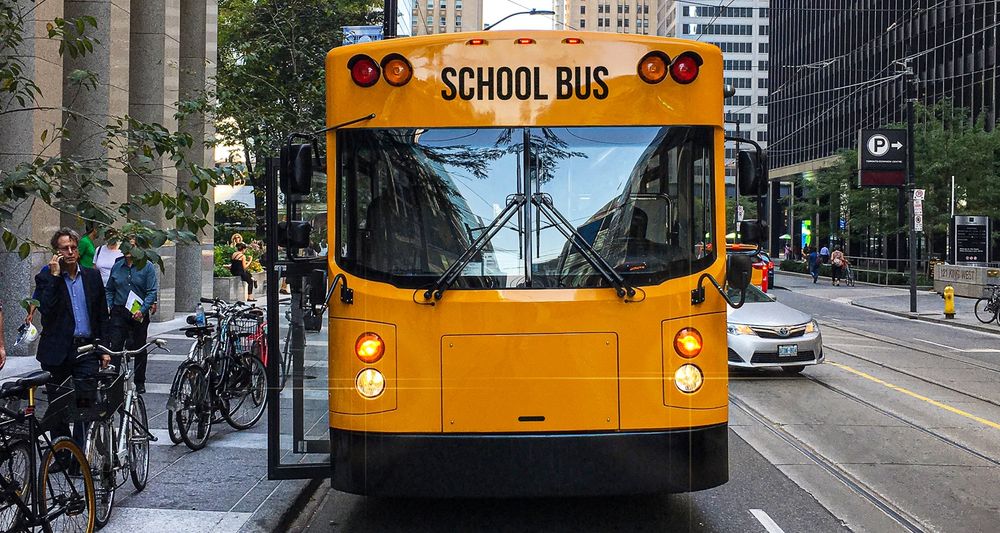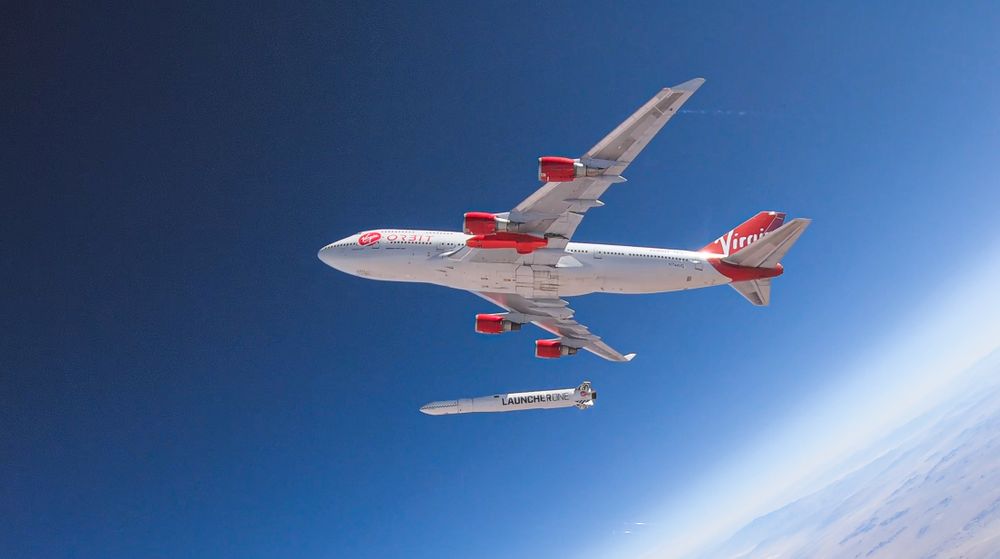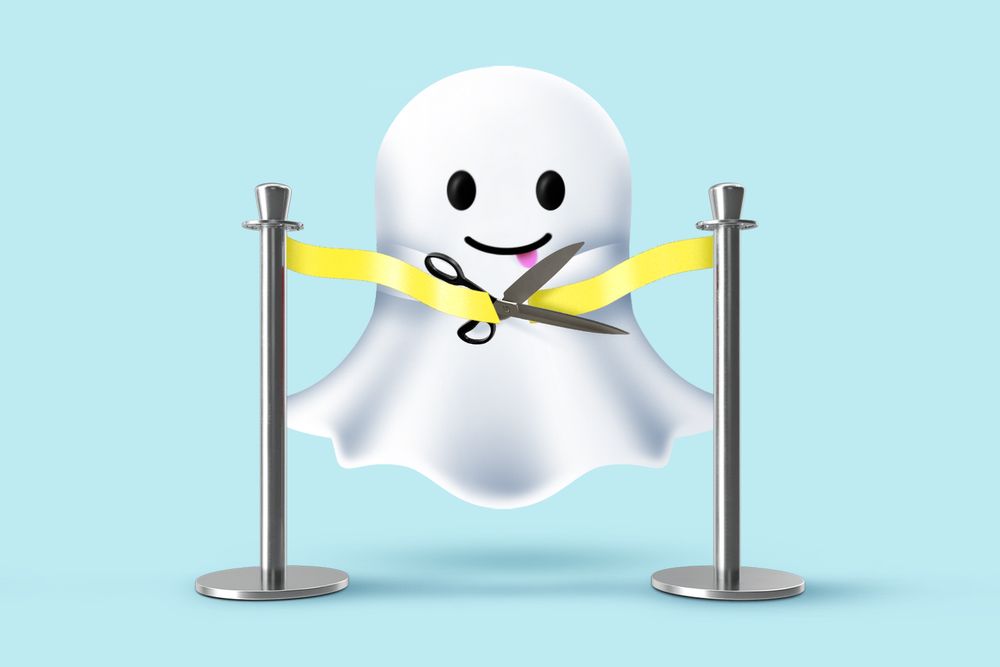|
Happy Friday, everyone. It’s definitely a bittersweet one for me (Ryan speaking, btw). After more than 2.5 years at the company and 350+ editions of this newsletter, today will be my final day at Morning Brew.
It’s been a great honor to be a part of building Emerging Tech Brew into what it is today. I’m excited to watch Dan, Hayden, and Jordan take the publication to new heights. And from next week on, I’ll be cheering them on from the sidelines, in the same position as you—a reader.
But this doesn’t have to be a complete goodbye, it can be a see you later/on other parts of the internet. If you want to keep in touch, I’ll include two ways to do so at the bottom of this newsletter.—Ryan Duffy
In today’s edition:
 Electric buses Electric buses
 Space as a service Space as a service
 Snap’s visual search AR Snap’s visual search AR
—Hayden Field, Jordan McDonald, Dan McCarthy
|
|
|
GreenPower Motor Company
|
Soon, it may be electricity that makes the wheels on the bus go ’round and ’round—not diesel.
This month, the Senate passed President Biden’s trillion-dollar infrastructure deal. The plan earmarks $2.5 billion for zero-emissions buses—enough for around 11,000 electric buses—plus another $2.5 billion for “low-emissions” ones.
Electrifying all US school buses could slash nationwide bus emissions in half—and since the transportation sector at large is responsible for nearly 30% of US emissions, that’s big news. The 480,000-strong fleet of US school buses makes up 80% of all buses in the country, but as of this month, less than 1% are electric, according to the World Resources Institute.
The road ahead
With the exception of The Magic School Bus’s field trips to outer space and the ocean floor, most school buses follow pre-planned routes, traveling an average 73 miles on a typical day. Electric buses are now more than capable of exceeding this range and can charge at overnight docking stations.
- GreenPower Motor Company, a Canadian electric-bus manufacturer, typically tells drivers to plan for a 120-mile range on one charge.
Progress is progress
The new plan’s $$ will electrify at most another ~2.2% of school buses, but environmental advocates say it’s not enough. The Electric School Bus Coalition, for instance, is advocating for $25 billion.
- Biden’s initial plan last year proposed replacing 96,000 US school buses—or 20% of the current operating fleet—with electric buses.
But, but, but…Electric school bus makers say they’re already seeing an increase in interest.
“We’ve got great momentum, and the whole Biden plan definitely served as a tailwind for us,” Ryne Shetterly, VP of sales and marketing at GreenPower Motor Company, told us, adding that he thinks there’s a good chance we could see 100,000 electric school buses on the road by 2030.
Comparing costs: Electric school buses are potentially 3x the cost of diesel ones, but over time, considering fuel and maintenance costs, the total dollar-per-mile cost of ownership is equivalent, Russell Vare, director of automotive partnerships at Nuvve, told us. He foresees the infrastructure deal bringing costs down.
Looking ahead: Since the school bus sector is a relatively traditional industry, the infrastructure deal could help overcome inertia. Getting access to one electric bus could create a snowball effect.
“I’ve talked to a lot of transportation directors, and they’re pretty skeptical of electric,” Vare said, referencing their concerns about seasons and range. But for the ones who have had early deployments, he said, “It gives them a lot of confidence to then start transitioning the fleet.”
Click here to read the full story.—HF
|
|
|
Virgin Orbit
|
Fresh off his trip to the edge of space, Richard Branson announced on Monday that his satellite launching venture, Virgin Orbit, will SPAC at a $3.2 billion valuation.
Dallas Kasaboski, a consultant with Northern Sky Research, told Emerging Tech Brew the SPAC money could help Virgin start to carve out a niche in the market, which is currently dominated by SpaceX. Elon Musk’s outfit makes up at least 30% of the $9 billion launch market; its reusable rockets and frequent launches allow it to outcompete competitors on price.
- Kasaboski said Virgin might not capture “the majority of the market, but it might be a significant and reliable and stable part of the market they can work with.”
Space as a service
Satellite launch services, like Virgin Orbit, serve as the go-between for rocketless companies. They helped send 1,200 satellites into space last year.
- Satellite companies like Swarm and Telesat, as well as government agencies like NASA, piggyback on rockets from SpaceX, Virgin Orbit, Firefly Aerospace and Rocket Lab.
- Interstellar bus tickets don’t come cheap; launches can cost between $50 million and $100 million for big satellites, and $30K–$50K per kilogram for smaller ones.
Virgin Orbit’s launch method is different from the convention of vertical takeoff and landing. It uses a modified Boeing 747 to slingshot its rockets into the upper atmosphere. The idea is that getting closer to space and using the momentum of the plane to give the rocket a boost is easier—and could eventually become cheaper—than vertical takeoff.
Big picture: The $9 billion launch services industry is predicted to grow to $17 billion in the next decade, according to Northern Sky Research, so expect to see more players entering the space...but also expect them to face a hard road.
“The competition is very fierce—there are long-standing relationships. Flight reliability, costs, and schedule are the main factors,” Kasaboski said. “And it’s hard as a startup to compete on any of those.”—JM
|
|
|
|
Sprig is taking a whole new approach to product research—so your customer insights don’t end up old, stale, and useless. Like saltine crackers in the break room. Not pleasant.
Sprig on the other hand, is a ~pleasure~ to use when perfecting your product.
It lets your teams integrate crispy, bite-sized questions right into your product or existing user journeys, allowing you to ask customers the right questions in real time.
Now let this sink in for a minute: Sprig is introducing asynchronous video interviews and concept testing. That means you can conduct interviews with your actual users 24/7—without the hassle of scheduling live sessions—and embed design concepts right into Sprig so you get instant feedback.
All of this is made even more powerful with Sprig’s targeting system, artificial intelligence, and expert research templates.
Dropbox, Adobe, and Square use Sprig to listen to their customers—start listening to yours today.
|
|
|
Francis Scialabba
|
Snapchat wants to replace Google as the destination for certain urgent day-to-day questions, such as “What dog breed is black, brown, and has jowls.” Or “What to make with kohlrabi.”
How? With its freshly upgraded, augmented reality-powered Scan feature, which rolled out yesterday, The Verge reports. The visual search feature lets users take pictures of certain things—e.g. cats, plants, vegetables—and generate information and/or recommendations.
- For instance, using Scan’s new shopping feature, you can point your camera at a piece of clothing you like, and Snapchat will recommend similar items.
Prior to its makeover...Snap Scan could identify songs, solve math problems, and clock items available for sale on Amazon. In addition to expanding what’s scannable, Snap is placing the feature smack in the middle of its app to juice engagement: Snap says Scan currently has 170+ million monthly active users.
Zoom out: Insider Intelligence principal analyst Victoria Petrock told Emerging Tech Brew that we’ll soon see more tech like this, which aims to actually...you know, augment reality. She also noted that Google, Amazon, Pinterest, and even startups like RedLaser already have similar tools.
“Now that it's possible with Snapchat we might see the younger user base using [visual search] and maybe it will catch on more quickly,” Petrock said. “But by no means do I think this is anything new or revolutionary.”—DM
|
|
|
Francis Scialabba
|
Stat: 19 out of 24 government agencies surveyed by the Government Accountability Office are using facial recognition. Use cases range from physical and digital access to law enforcement.
Quote: “We’re going to deliver 1,000 times performance at the end of the decade...I think we have had the end of classic Moore’s Law. And I believe this new era is moving from scale complexity to systemic complexity.”—Synopsys CEO Aart de Geus to VentureBeat
Read: The Markup found that mortgage approval algorithms are 80% more likely to deny a Black applicant than a white applicant.
Your digital assets are restless; let 'em out into the world: With Bakkt, you can buy, sell, and spend in one place—plus send bitcoin, gift cards, and cash to friends. Manage your rewards from a single wallet with Bakkt here.*
*This is sponsored advertising content
|
|
|
|
Don’t let precious leads slip through the cracks. In the B2B space, it happens all the time. Up to 85% of people requesting a demo never even see one! Chili Piper patches the cracks in your funnel so you can increase high-intent interest, double conversions, and fuel your sales pipeline. With their Concierge tool, you can convert inbound leads into qualified meetings—instantly. Make meetings happen with Chili Piper.
|
|
-
TSMC, which makes 90+% of the world’s advanced semiconductors, plans to raise prices 10% for advanced chips, and 20% for the less advanced chips that automakers use.
-
ByteDance is reportedly mulling a purchase of Chinese VR hardware company Pico.
-
Google and Microsoft committed to billions in cybersecurity investment following a White House summit on Wednesday.
-
Wing, Alphabet’s drone delivery arm, is closing in on delivering its 100,000th package.
-
Google claims employees do not have the right to protest its clients. In recent years, employees have contested work with ICE, the DoD, and oil and gas companies.
|
|
|
Three of the following news stories are true, and one...we made up. Can you spot the odd one out?
-
The farmer app economy is booming.
-
A crewless, electric cargo ship will set sail this year.
-
El Salvador is installing 200 Bitcoin ATMs.
-
Burger King will begin 3D printing “the vast majority” of its fries.
|
|
|
T-Mobile outperformed Verizon and AT&T on 5G speed tests conducted by PCMag, in large part because it has outpaced its competitors in deploying mid-band 5G, which tends to be faster and higher-capacity than low-band.
- T-Mobile won speed tests in 24 regions, while AT&T won eight and Verizon won just two.
For more...check out our guide to all things 5G.
|
|
|
Ryan here again with my final sign-off. if you want to stay in touch, you have two options:
1) Find me on Twitter
2) Sign up for Cybermonk, a weekly personal newsletter I’ll be writing. It won’t be as good as Emerging Tech Brew, cause I won’t have the world-class resources and editors of Morning Brew. But it will have memes.
|
|
|
Catch up on the top Emerging Tech Brew stories from the past few editions:
|
|
|
Enjoying the newsletter? Share it with your network to take advantage of our rewards program.
When you reach 5 referrals, we'll send you this Morning Brew sticker sheet.

Hit the button below to learn more and access your rewards hub.
Click to ShareOr copy & paste your referral link to others:
morningbrew.com/emerging-tech/r/?kid=303a04a9
|
|
|
To our knowledge, Burger King has not announced plans to begin 3D printing its fries.
|
|
|










